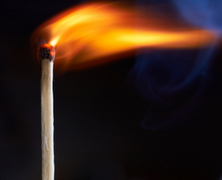I’ve read lots of theories of why this is, from “adrenal fatigue,” where a constant fight-of-flight state aggravates and exhausts muscles and nerves, to the psychological notion that focusing on physical pain is the body’s way of protecting itself from despair, anger, or fear.
Whatever the cause, the effect, frankly, stinks. Flares look different in every body–in mine, they usually either show up as a tonsil/Eustachian tube infection, or in neuralgia/nerve pain in the low back and hips. And the happy fact is that since I started doing gentle yoga, swimming, taking my vitamins, and eating my grains and greens, I really haven’t had one that goes to 11.
But I’ve been under unusual stress lately, and yadda yadda yadda….flare. Big one. Back. Hips. A-flarin’ they go.
To calm it–and myself–down, I’ve instituted what I’m calling a “self-care blitz.” This is something to pull out when you’ve really had it, you’re really in trouble, and you need a rescue, like, NOW.
10 Steps to a Self-Care Blitz
1. Set Self-Care as Job One in Your Day. Because you’re no good to anybody, never mind yourself, when you’re flaring, find a way to say to yourself, “Nothing matters more today than getting a handle on this flare-up and getting myself back under control.” If that means a sick day, so be it. If it means a lunchtime walk or acupuncture session, so be it. If it means lying in a darkened room for an hour or three, So. Be. It.
2. Name the Pain. I find that when I have a pain flare, it starts to act more like a grease fire than a single match. In other words, my panicked brain wants to scream, “Everything hurts!” when I am asked what’s wrong. It really helps to get very specific, choose your words mindfully, and figure out a sentence or two to repeat to yourself and any healers you might consult. Like, “I am going through an anxious time right now, and the emotional stuff has triggered an old back pain pattern in my body.”
3. Remember: Everything Is Temporary. Say it with me: This too shall pass. Don’t project your temporary flare onto the big screen called “the rest of your life.” Figure out what your problem is today, and think about what you can do to soothe it.
4. Be Miserable. There’s nothing worse than running from a flare–because the flare will always chase you. Give yourself permission to acknowledge that this (temporary) issue is really ruining your day, pissing you off, depressing you, etc. It’s an important way to remind yourself that you are still you–this flare is just an unwelcome guest you’ll figure out how to evict.
5. Retreat to Your Comfort Zone. Save “pushing your limits” for whenever you get back to the gym. Now is the time to signal your brain and body to calm down by giving it what is guaranteed to relax it. Bubble baths work here, as do comfort movies, well-worn paperbacks, and even having ice cream for dinner, if that’s what it takes to press control-alt-delete on your flare.
6. Move…Gently. When my low back is on fire, I have a short list of gentle stretches to help nudge the muscles to let go of their choke holds, and to bring some nourishing blood to the war zone in the meantime. Cat- and dog is good, or legs-up-a-wall, or a verrrry gentle twist. What movements would bring comfort to your body right now? Yeah, do those.
7. Get Professional Help. It’s always a good idea to call in reinforcements during a flare, even if it’s a condition that you know you have and have worked through before. Visit your doctor if you think he or she might have new suggestions on how to calm the flames. Or make an appointment with an acupuncturist, massage therapist, chiropractor, or psychologist. It can be hard to muster the energy to set up and drag yourself to appointments, but I’ve seen an acupuncturist and massage therapist both in the past 48 hours, and wow am I glad I did.
8. Eat Something Clean. A flare can affect your appetite, so it’s important not to force yourself to eat if you’re not hungry, or beat yourself up if you don’t want “healthy” food. But if you can get some nutrient-dense food (nuts, eggs, colorful fruits and vegetables, greens) into at least one daily meal during a flare, you’re on the right track. Even if you do end up having ice cream for dinner.
9. Choose a Soothing Mantra. A few words can go a long way, and become what Thich Nhat Hanh calls “a safe island of mindfulness” for you to return to whenever you need. I have a relaxation CD that begins with the sentence, “I am starting to feel quite quiet,” and for whatever reason those words feel like a magical balm over my whole body. You can also just fill your head with comforting words like calm, peace, soothe, soft, open, smooth, relaxed, and rested.
10. Rest. Getting enough sleep is always important, but never more so than when you’re in a crisis. Visualize rest swirling through your body like a healing light, imagine it restoring your health and energy, and let yourself float off into the peace and promise of a new, better day ahead.
(image via: http://community.seas.columbia.edu)
Like what you see? Click here to subscribe and get Fresh Living in your in-box every day!


